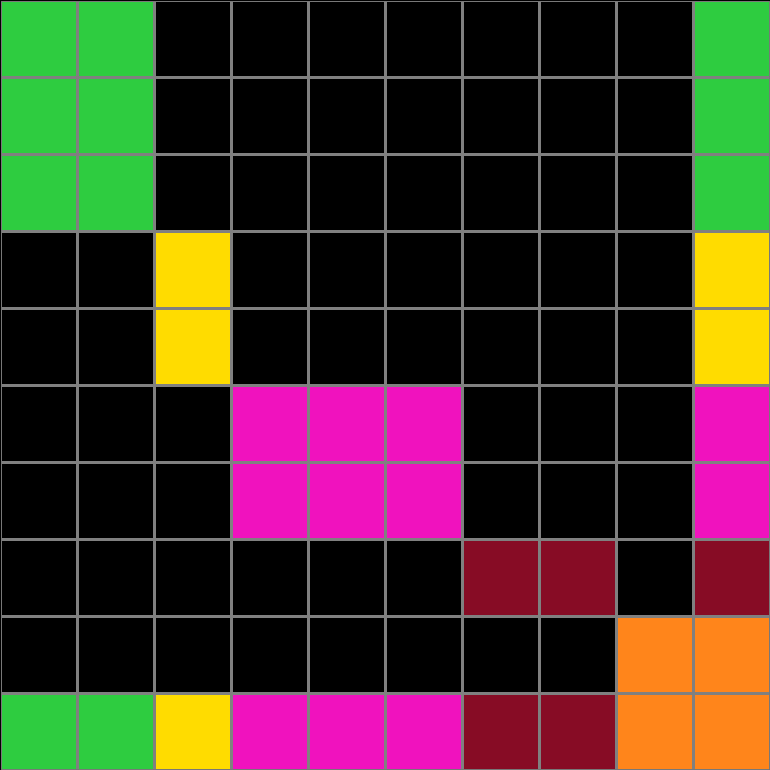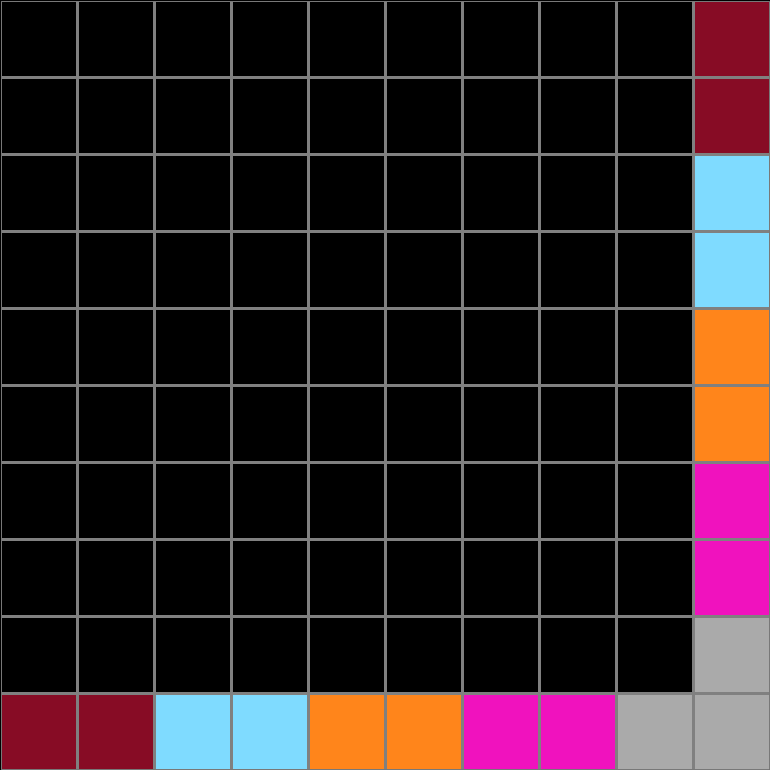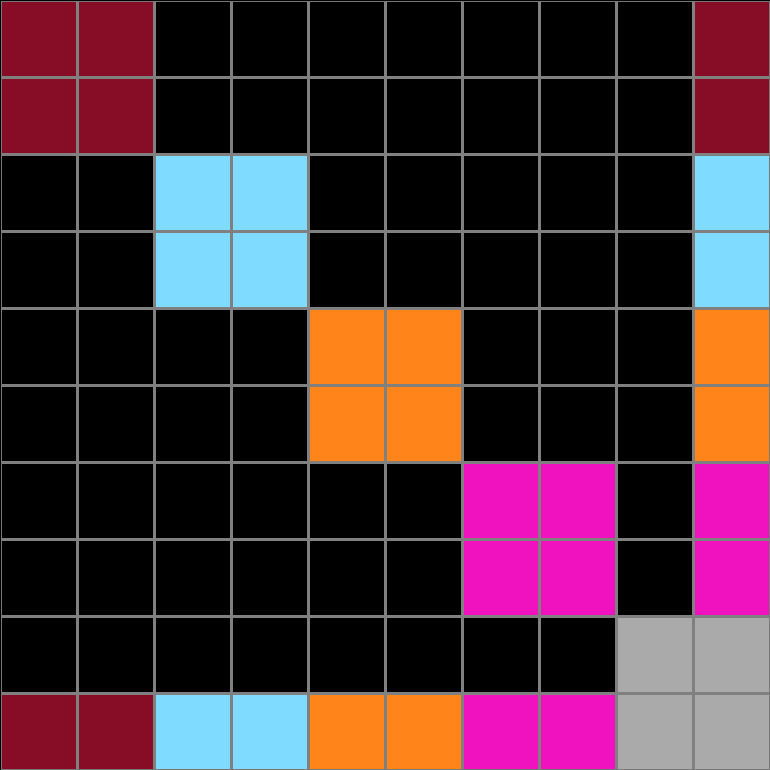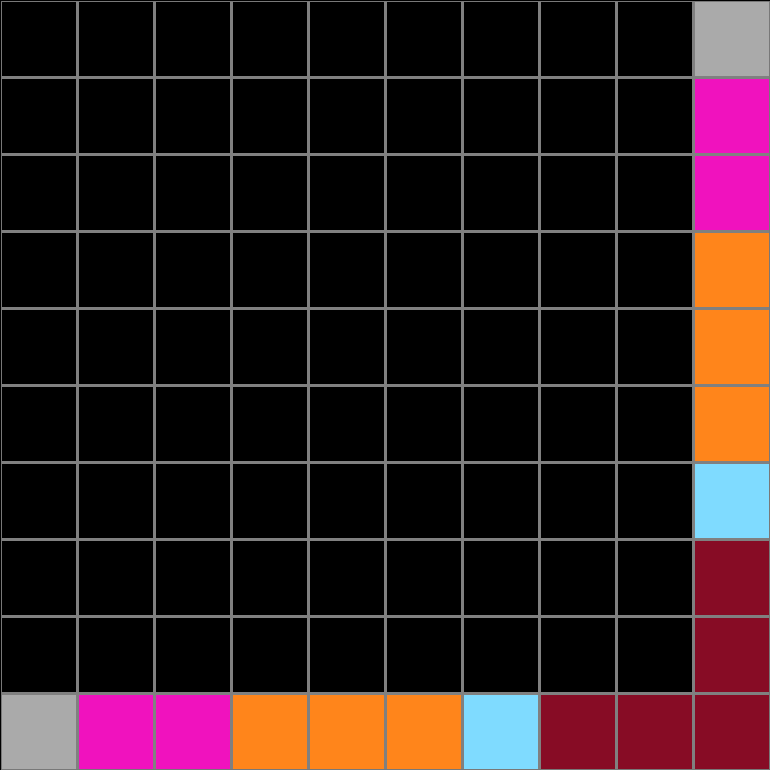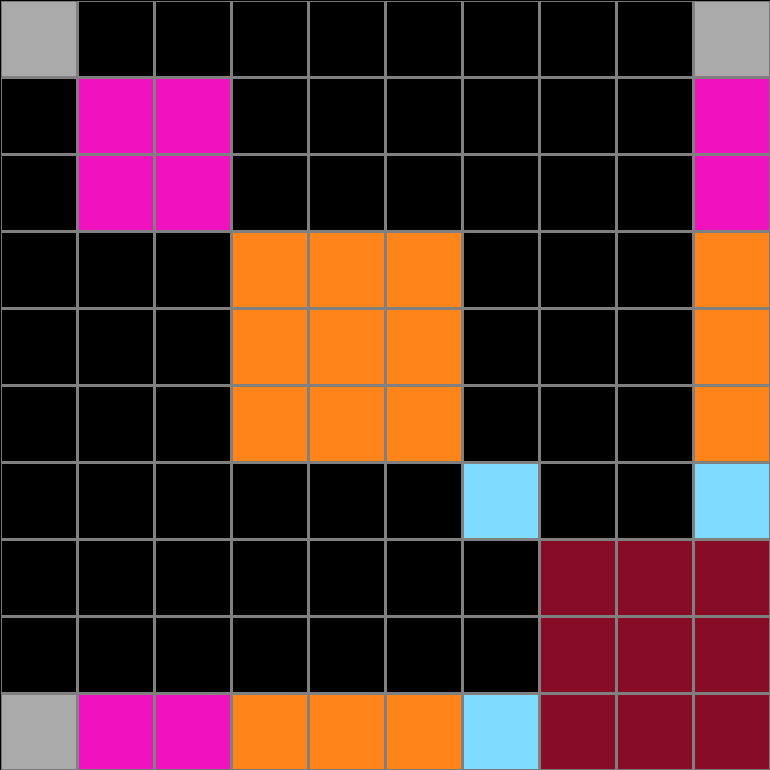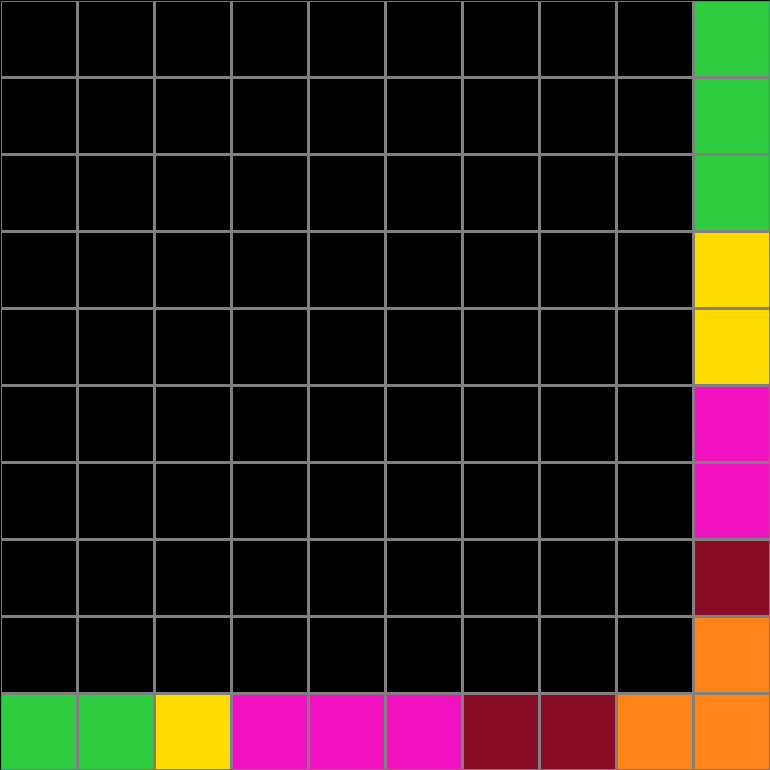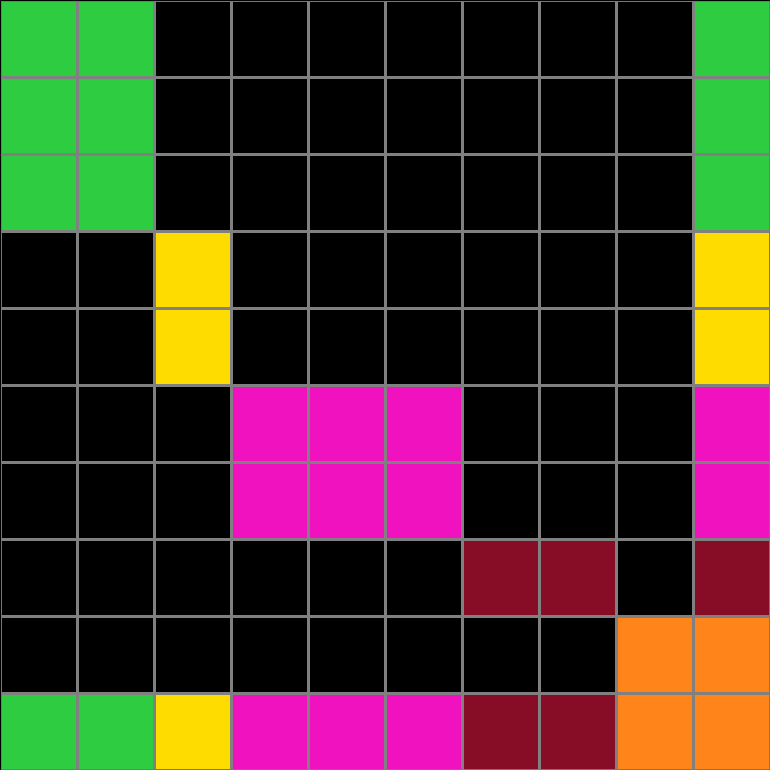Participant 1
Initial description: I thought the rule was to use the guide to replicate the colors of the previous graph.
Final description: I thought the rule was to copy the formula from the guide.
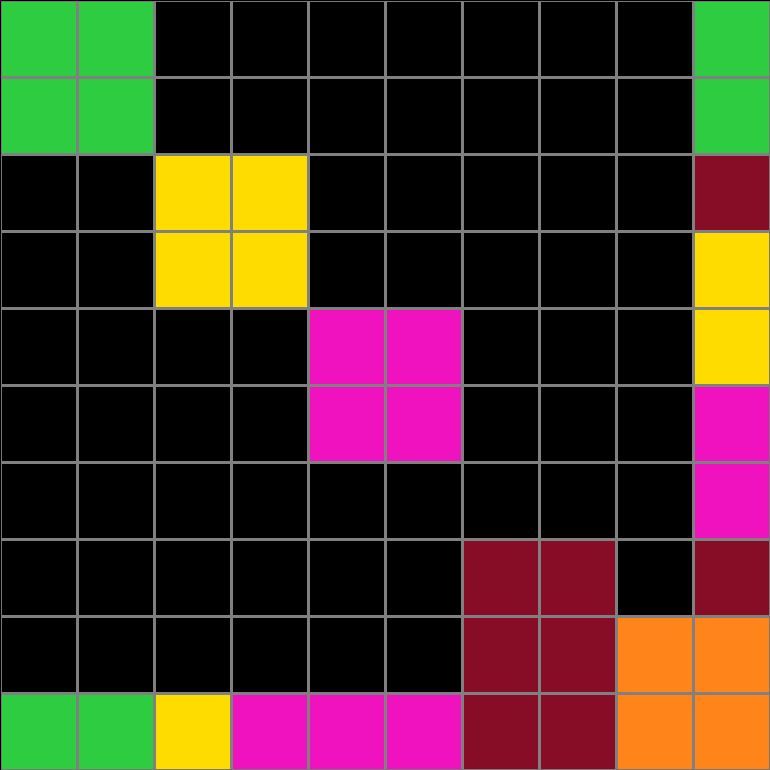


Participant 2
Initial description: Where each color intersects across the x and y axes, rectangles of that color should be placed in the empty space, to correspond with the widths on the edges.
Final description: Where each color intersects across the x and y axes, rectangles of that color should be placed in the empty space, to correspond with the widths on the edges.
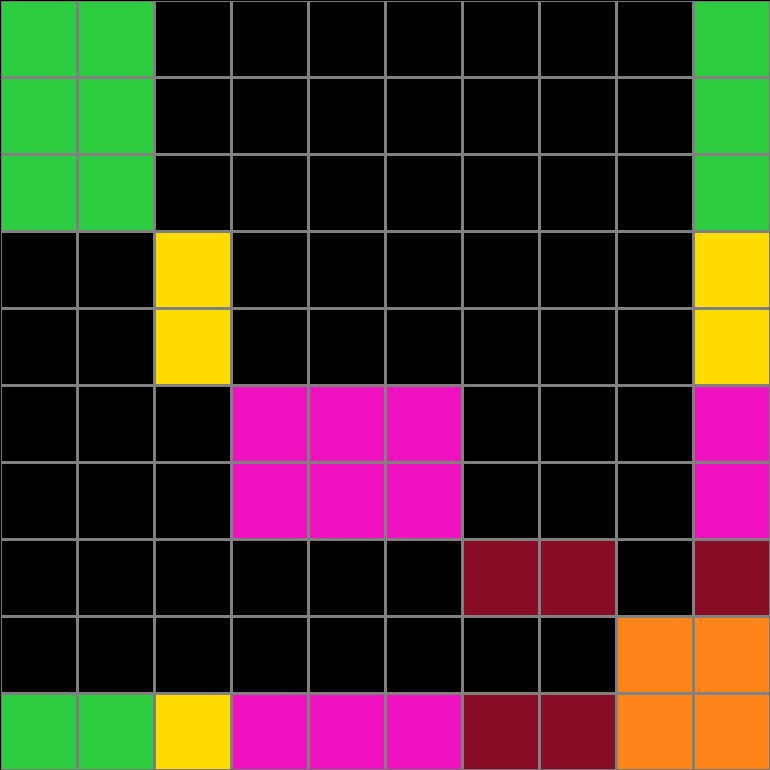
Participant 3
Initial description: The colored cells on the right side correspond to Y-axis location while the colored cells on the bottom correspond to X-Axis location.
Final description: The cells on the right side correspond to Y-axis location while the cells on the bottom correspond to X-Axis location.
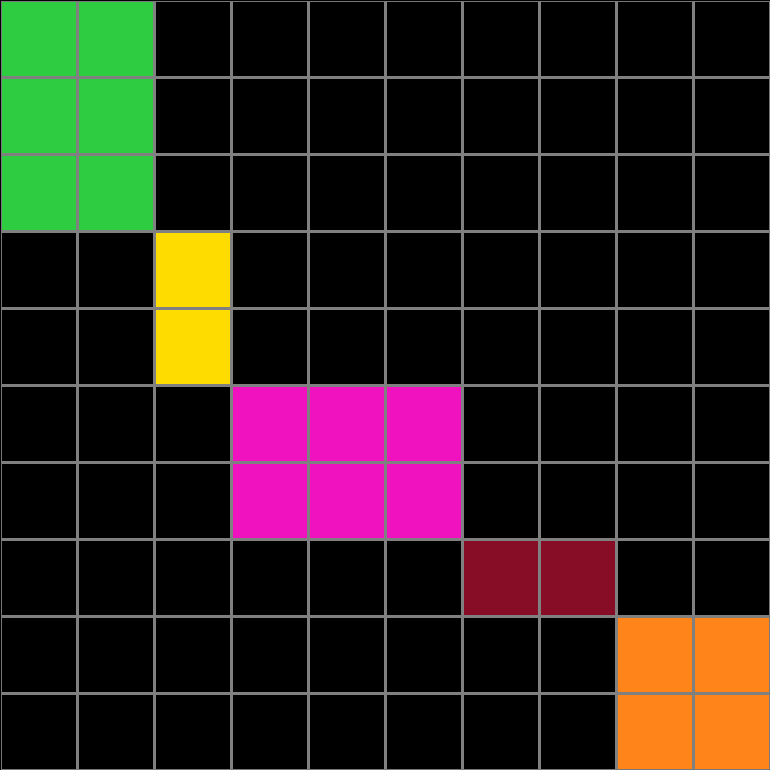

Participant 4
Initial description: Oops
Final description: Match the horizontal and vertical colors in rows and columns. Start in the upper left and work your way down diagnally.
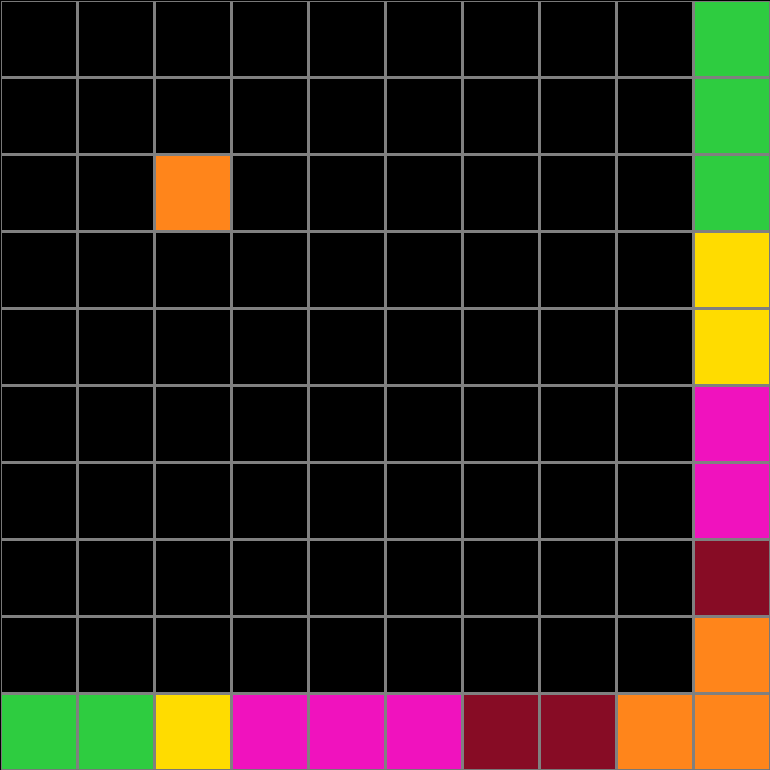

Participant 5
Initial description: The x and y axis of colors combine in a diagonal form
Final description: The x and y axis of colors combine in a diagonal form
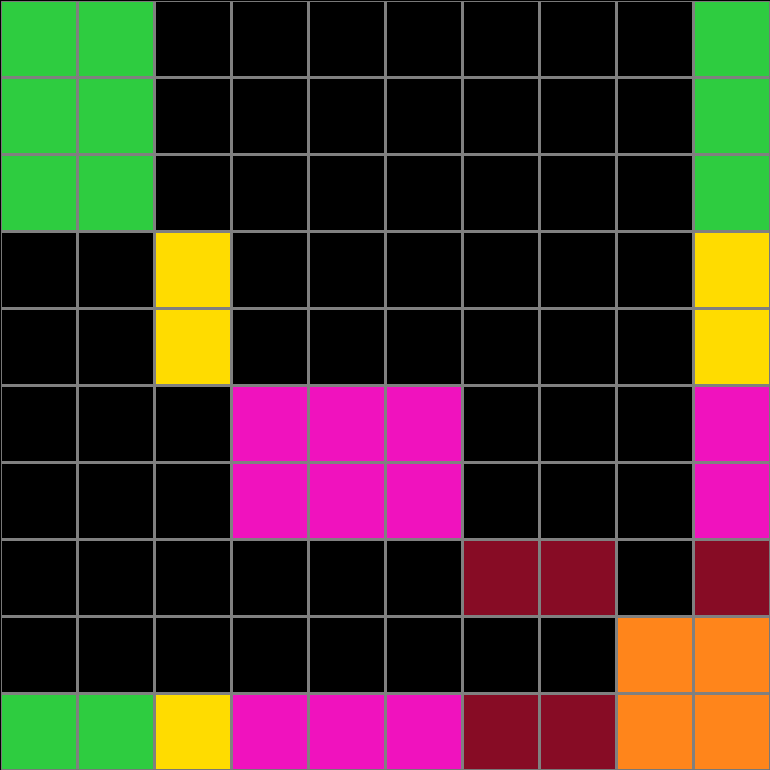
Participant 6
Initial description: Two sides of the grid have a color pattern that corresponds to the pattern in the center.
Final description: Two sides of the grid have a color pattern that corresponds to the pattern in the center.
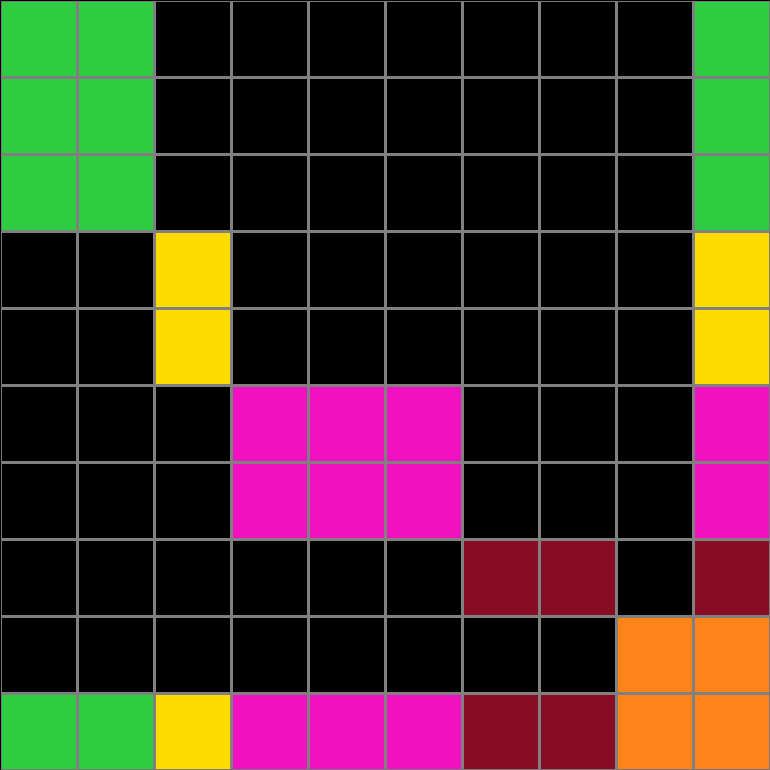
Participant 7
Initial description: shadow
Final description: shadow

Participant 8
Initial description: I had to double the green blocks and place them on the opposite side, then I repeated this process with the yellow and pink blocks. I I didn't have to double the mauve block because if there is only one you don't need to. I then made sure the orange was covering the corner and that the bottom rows aligned with their respective colors.
Final description: I really don't understand what I did wrong. I thought the rule, as I explained was to double the pattern of the block on the opposite side; so if you had three green blocks on one side, you placed six green blocks on the other, and you repeat this pattern.
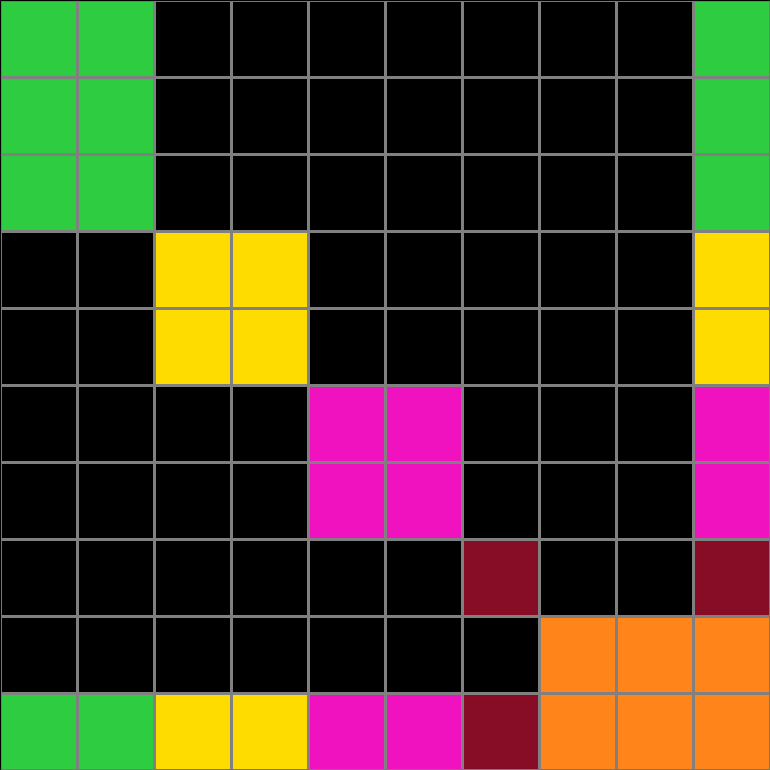
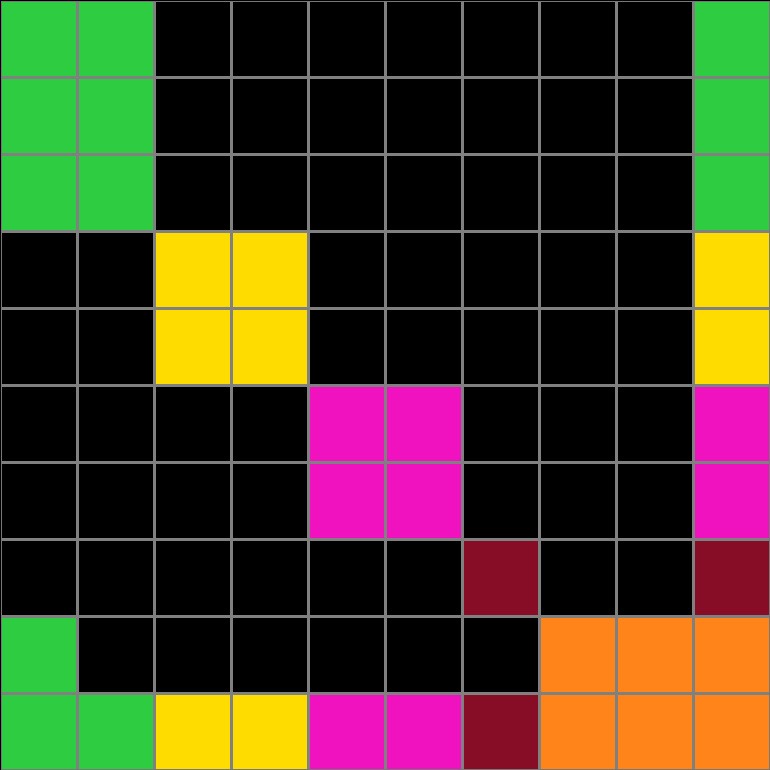

Participant 9
Initial description: Fill in the blocks on the grid with the colors where the same color crosses (i.e. if there's two horizontal greens and three vertical, fill in a 2x3 green area where they cross)
Final description: Fill in the blocks on the grid with the colors where the same color crosses (i.e. if there's two horizontal greens and three vertical, fill in a 2x3 green area where they cross)

Participant 10
Initial description: This one appears to be a simple column-row relationship where the height and location of each set is determined by the number and location of rows on the left for that color and the width and location is determined by the number and position of rows on the bottom for that color.
Final description: This one appears to be a simple column-row relationship where the height and location of each set is determined by the number and location of rows on the left for that color and the width and location is determined by the number and position of rows on the bottom for that color.

Participant 11
Initial description: The edges determine the location and color of the cells. When the X and Y axis are the same color, the cells that intersect are the matching color.
Final description: The edges determine the location and color of the cells within the grid. When the X and Y coordinates along the edges have the same color, then the intersecting cells are also that color. Black is used where there is no intersection.

